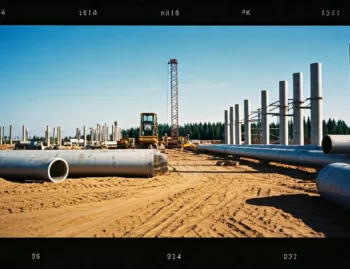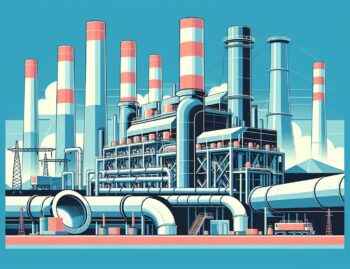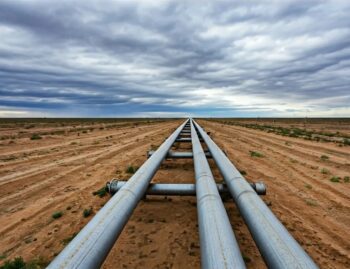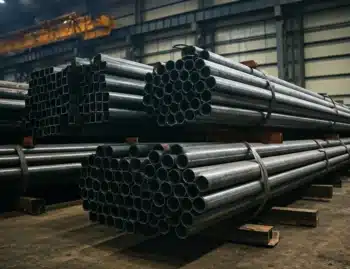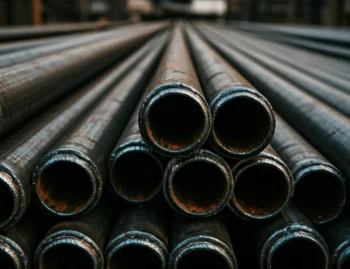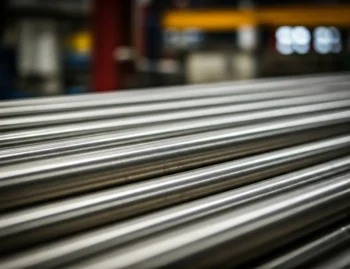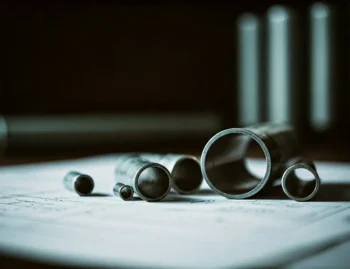
Have you ever found yourself pondering the differences between welded and seamless pipes? Whether you’re venturing into a DIY project or simply satiating your curiosity about plumbing and construction, understanding the distinctions can be valuable. This FAQ will unravel the differences in a friendly and easy-to-understand way.
What Are Welded Pipes?
Welded pipes are created by rolling steel into a pipe shape and welding the seam together. This process makes them highly customizable and suitable for various applications.
Because of their manufacturing ease, welded pipes have a wide array of uses. They are often the go-to choice for projects that require specific shapes and sizes, illustrating their adaptability. Their versatility comes with the added bonus of being more cost-effective, particularly for larger diameters, where seamless pipes might not be practical.
While welded pipes are generally known for their adaptability, it’s important to remember that the seam can impact performance in high-pressure environments. However, advancements in welding technology have greatly enhanced their strength and reliability, making them a more viable option for various needs.
What Are Seamless Pipes?
Seamless pipes are produced using a process that forms the pipe without a seam. This typically involves passing a solid billet through a piercing rod, giving them a uniform and robust structure.
Without a seam, seamless pipes have a consistent structure. This attribute makes them particularly suitable for applications involving high pressure, where the strength of the pipe’s structure is paramount. For example, industries such as oil and gas prefer seamless pipes for their resilience under extreme conditions.
However, it’s important to consider the trade-off with seamless pipes. While they offer superior strength, this performance comes at a higher cost. They’re often more expensive to produce and purchase compared to welded pipes, which is a crucial consideration depending on the project’s scope and requirements.
Key Differences in Manufacturing Process
The primary distinction lies in how they’re made: welded pipes have a seam, while seamless pipes do not. This impacts their strength, cost, and application.
The production process of a welded pipe involves rolling flat steel strips and then welding them into a cylindrical shape. In contrast, seamless pipes are crafted from a single piece of metal and are inherent in their design to have no joins or seams. This difference in production significantly defines their individual properties.
From the standpoint of cost, welded pipes tend to be cheaper and more readily available due to their easier production process. On the other hand, seamless pipes, complex in their manufacturing and processing, typically come at a premium. Each process has its own benefits suitable for specific applications and requirements.
Applications and Uses
Welded pipes are often used in less demanding scenarios, such as plumbing and fencing, due to their flexibility and lower cost. Seamless pipes, however, are favored in industries that demand strength, such as oil and gas.
In construction and infrastructure, welded pipes serve effectively in tasks like drainage systems and scaffolding. Their ease of installation and adaptability to different widths and thicknesses prove beneficial where strength factors can be moderately compromised.
For those industries requiring robust and unwavering resistance to pressure, seamless pipes are a natural choice. Consider sectors like aerospace, petrochemical, or high-demand manufacturing, where seamless pipes’ ability to withstand pressure without the risk of ruptures is invaluable.
Pros and Cons of Welded Pipes
Welded pipes are cost-effective and highly versatile. However, the seam can be a weak point, making them less suitable for high-pressure applications.
On the positive side, the cost-effectiveness of welded pipes is significant, often leading to substantial savings for projects with tighter budgets. Moreover, they offer easy alterations in size, tailoring them for specific requirements without much hassle.
Despite these strengths, their inherent seam can be considered a drawback, particularly in environments with demanding pressure requirements. However, with modern techniques and technology improving seam quality, welded pipes are increasingly becoming a solid choice in many engineered solutions.
Pros and Cons of Seamless Pipes
Seamless pipes boast superior strength with no weak points, which is ideal for demanding applications. However, they are generally more expensive than welded pipes.
The lack of a seam enhances seamless pipes’ ability to handle pressure, making them highly suitable for high-stress environments. Industries like nuclear or chemical manufacturers rely on these attributes for safety and reliability.
Conversely, the intricate manufacturing process translates to a higher costing product, necessitating careful consideration when budgeting a project. Balancing the need for the benefits of seamless pipes against the expense is a critical decision for engineers and project managers.
Making the Right Choice: Welded vs. Seamless Pipes
By understanding the key differences between welded and seamless pipes, you can make informed decisions for your projects. Each type of pipe has its strengths and best-use scenarios, ensuring there’s a right choice for every need. Whether it’s the cost-effectiveness of welded pipes or the strength of seamless ones, knowing these details is essential.


